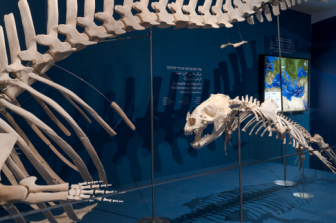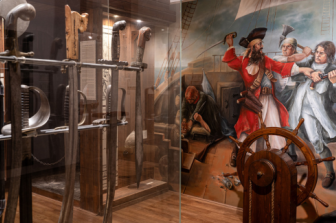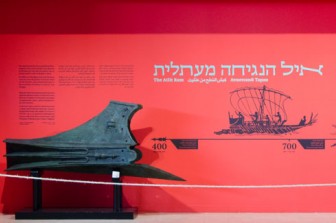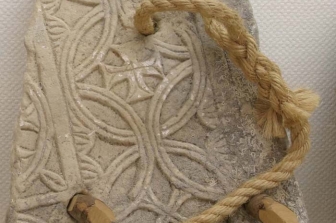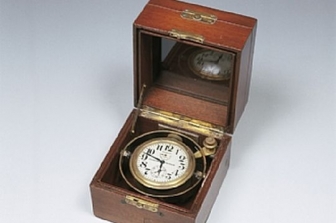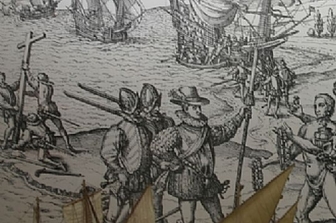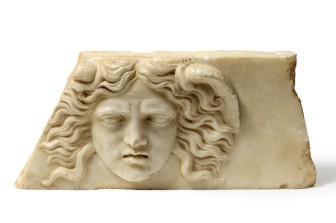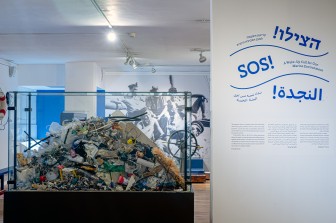Exhibitions
Mammals of the Deep | The Wonderful World of Marine Mammals in the Mediterranean and in the Gulf of Eilat
New exhibition
This exhibition is a product of this special bond between humans and nature. Specimens that indicate a highly diverse presence of marine mammals in our region have been brought to the museum for the very first time. Marine mammals of the Mediterranean and of the Gulf of Eilat, which is, in fact, an extension of the Indian Ocean, include various species of cetaceans (whales and dolphins) and one species of seal. The telltale findings that testify to their presence have been collected by a very special group of people, members of IMMRAC, who devote their time and energy to the task of studying the world of marine mammals and assisting in the protection of their habitat.
Pirates - Between truth and legend
The phenomenon of piracy - piracy - has evolved since man began trading in ships, and it has flourished mainly in areas of loose rule. Piracy existed in ancient times in the Mediterranean and the Sea of China and reached its peak in the seventeenth century in the Atlantic Ocean, with the rise of European colonialism and the development of trade routes with the "New World".
Fishermen and Fish | Fishing Culture in Artifacts from the Haifa Museums Collections
Now at the museum
This exhibition invites viewers to observe the environment of fishing villages, blending with the shore and the marine landscape, and to take a quick glance at the narrow streets of markets filled with fresh fish. It also introduces works depicting the world of fishermen peacefully engaged in their craft, as well as the dedication of fishermen anchored in shipyards or venturing out into the vast sea. Viewers are invited to explore different fishing experiences—whether calm, dynamic, or stormy—and to face the challenges posed by nature along with the fishermen. Other works focus on the diversity of types of fish. Finally, upon returning to the shore, one can encounter marine gatherers at work and fishermen focusing on the meticulous task of mending nets, allowing for an inward, meditative experience.
The Athlit Ram
One of the most important and rare discoveries of underwater archaeology in Israel is that of the Athlit ram. It was discovered by the late Yehoshua Ramon in 1980, in the northern bay of Athlit, and was retrieved from the sea by the staff and students of the Maritime Civilizations Department at the Centre for Marine Studies at Haifa University.
Anchors
One of the concerns of seafarers of all times has been how to halt their vessel in mid-ocean when necessary. The first sailors solved the problem by lowering a rock tied to a rope onto the sea-bed.
Scientific Instruments
Mathematical instruments are intended for measuring angles and distances, and are applied to astronomy, topography and navigation. Some have wider uses as drawing instruments or to measure time. Very few have been left from ancient times. Some Chinese jades, some Greek terra-cottas, some bronze fragments are all that remain from those early periods.
Ancient Shipping
The lands of the Mediterranean and the Red Sea were always connected with the sea and the rivers. Already in the earliest periods boats traversed the rivers and the coasts of the sea. In these lands was born and developed the art of seafaring, at least as far as the western world is concerned.
The Age of the Maritime Discoveries
During the 15th-16th centuries maritime exploration and colonization reached a peak. It was a decisive phase between the Middle Ages and the beginning of Modern Times.
Gods, Goddesses, and Marine Superheroes
This exhibition presents emblematic figures of gods, goddesses, heroes, and mythical marine creatures from ancient times to the modern era. Maritime trade and seafaring have played a crucial role in shaping cultural exchanges, through which sea-related beliefs and myths evolved and transformed. The vastness of the sea has been an endless source of human imagination - from the mighty gods of the ancient Egyptians, Phoenicians, Greeks, and Romans, through the protective saints of Christianity, to the superheroes of the modern age.
SOS!
This exhibit urges all of us to raise awareness of the rapid ecological destruction taking place in our marine environment. It invites us to join thousands of activists in Israel and worldwide in participating in both small- and large-scale actions in support of the ocean’s ecological health.

